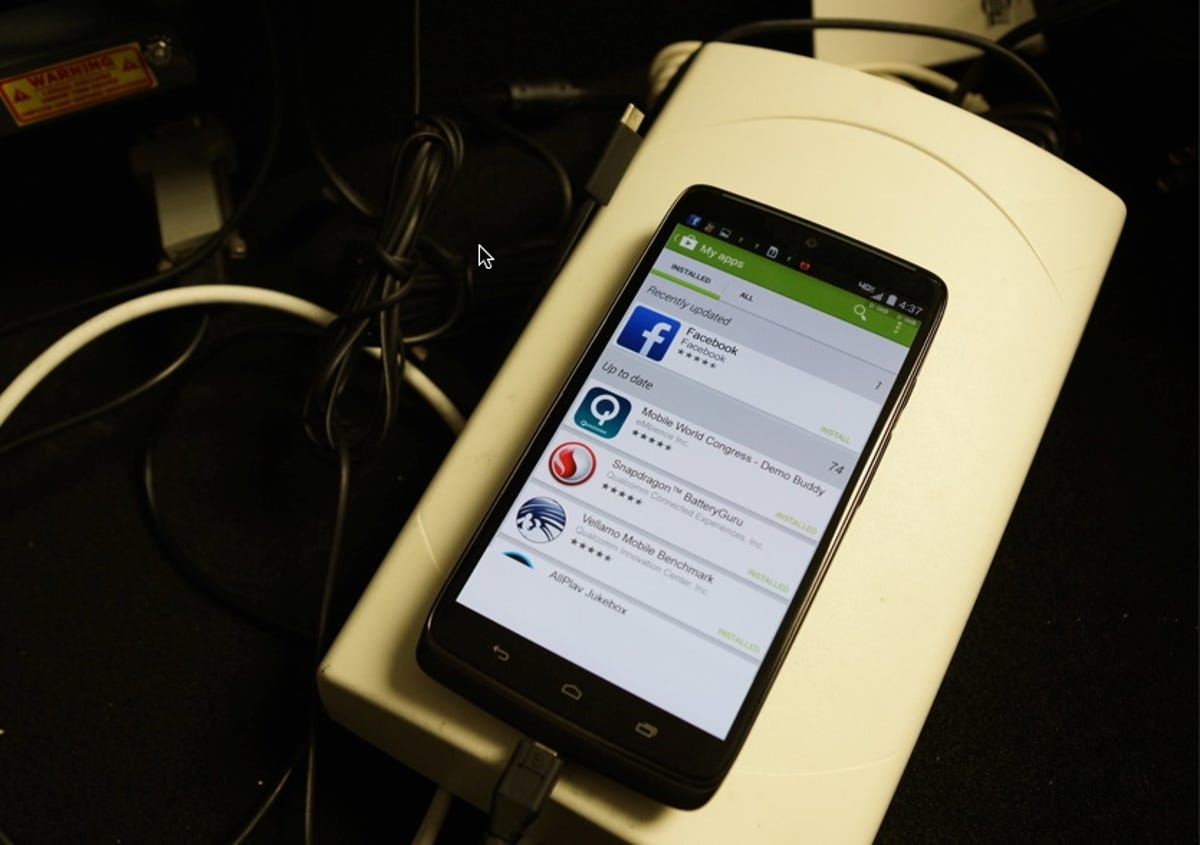
Jessica Dolcourt/CNET
LTE Broadcast may not be a household term yet, but it’s one that will soon affect you either way.
What is it? Also known as multicast, it’s a capability that carriers are working on (along with some of their partners) to use LTE spectrum to beam something — like a software update or a video — to a ton of customers at once. The same way that a TV station can broadcast the same program to your living room at a given time, a carrier will be able to schedule “programming” for your phone.
Related stories
- Verizon uses Super Bowl to show off LTE broadcast video
- Qualcomm’s handset partners rally around its embattled new chip
- Forget 4G. Here’s what 5G wireless tech will look like
Here’s my favorite good-for-users example. The next big smartphone OS update is ready to go. Today, your provider slowly rolls out the message that you can download the software over the air. You still have to press the button to get the download going, then install. The only thing that the carrier has actually pushed to you is the notification to do this. If Wi-Fi or your data connection are shaky, you’ll have to wait.
With LTE Broadcast, your carrier could push out the update while you sleep, so that when you wake up, all you need to do is install the app; it’s already downloaded and living on your device.
I got to see a demo of this in a controlled environment at Qualcomm’s headquarters in San Diego, Calif., where it helps test use cases for carriers like Verizon in the US. Qualcomm’s demo of a Facebook update was kludgey in the ways that demos typically are, but it got the point across.
Not just apps
LTE Broadcast isn’t only for software updates, and in fact, carriers could use it to distribute a wide variety of content, even videos and ads. South Korean carrier Korea Telecom (KT), for example, launched LTE Broadcast in January 2015, where it delivers a certain video stream to subway commuters. US carrier Verizon used the Super Bowl game to showcase simultaneously pushing video to customers.


Dan Graziano/CNET
This past CES also saw a demo of LTE Broadcast updating car
mapping software automatically, a real improvement for a system that often requires you to load new maps through an external disk or drive. It isn’t much of a leap to imagine the protocol extending to other connected devices like your smart home security system or countertop appliances.
Depending on the situation, broadcast like this could strike you as a boon or an irritant.
So long as the chip is compatible with LTE Broadcast, it can be added to a TV set-top box or hotspot as well. Chipmaker Qualcomm is one company that has been working on this for two years, and it’s already embedded in its most recent processors for phones.
All that needs to happen now is for the operators to prepare their networks and for Qualcomm and others to flip the switch. 3…2…1…live.



